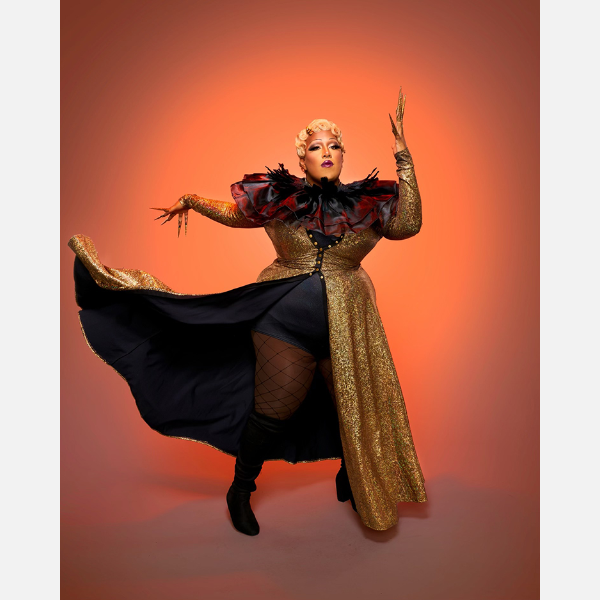How shaping your arts intake helps dismantle oppression
“It feels almost like a rebellion, being an artist and navigating this space.”
It’s easy to be drawn in when Alexander Martin M.A. ’15 MFA ’17 walks into a room. Whether in drag as Artemisia VanHo or striding in on an average day, Martin (they/them/she/her), co-founder of the Peoria Guild of Black Artists, carries the gravitas of a rebel with a well-defined cause.
“It feels freeing being an artist who is Black, who is queer, who is trans, who is from Appalachia, because I have all these perspectives going in,” they said. “I've seen the gilded ideal that folks have for the art world and the white dominant culture that perpetuates that.”
An artist by trade, Martin’s frustrations with the homogenous artistic canon are clear – When white men take center stage, who gets erased from the conversation?
“We don't talk about indigenous art,” Martin said. “We don't talk about the people making work before, way before colonization. We don't talk about the work from my ancestors and the deep spirituality and connection to art and making and dance and performance that runs in my roots.”
With success in art school so reliant on said roots, much of the work Martin produced at Bradley was in service of self-discovery. Between taking classes on gender and identity and trekking through the turmoil of coming out, they felt the need to find community. They were happy to find that through fellow queer artists.
“If you look at LGBTQ+ history, queer people are always protesting and always connecting and making community. And it's always through the arts. It's through theater, it's through performance, it's through drag, it's through visual arts. These are the spaces that we connect and communicate.”
But art alone is not always enough to support the artist, especially for a person coming from generational poverty. To make matters worse, opportunities after graduation were scarce and swiftly snatched up by white, cisgender creatives. Pair that with the painful loss of a sister and Martin needed change. Then the pandemic hit.
“So being at home a lot, racial fear, still grieving loss, it was like I turned to my art practice and reconnected with the reasons I started making art growing up,” Martin said. “And right around that same time, the murders of George Floyd and Breonna Taylor happened, which led to the formation of the Peoria Guild of Black Artists and making space with other Black creators and other queer creatives. And people were listening. The spotlight turned around and people were listening, or at least trying to.”
But progress is still needed, Martin said.
“I think [the Peoria community] needs to move past just bringing in folks for diversity and understand what actual equity is, what representation is, what advocacy is,” Martin said. “I think people need to get rid of the barriers they create. There's this idea, especially in the arts, of ‘professionalism’ and what that looks like. And I think we need to work even harder at dismantling that and understanding that it's all sort of made up. We made it up to keep people out. If we want to really bring people in, we need to change the way we talk about art and change the way we make space for art.”
-- Jenevieve Rowley-Davis



